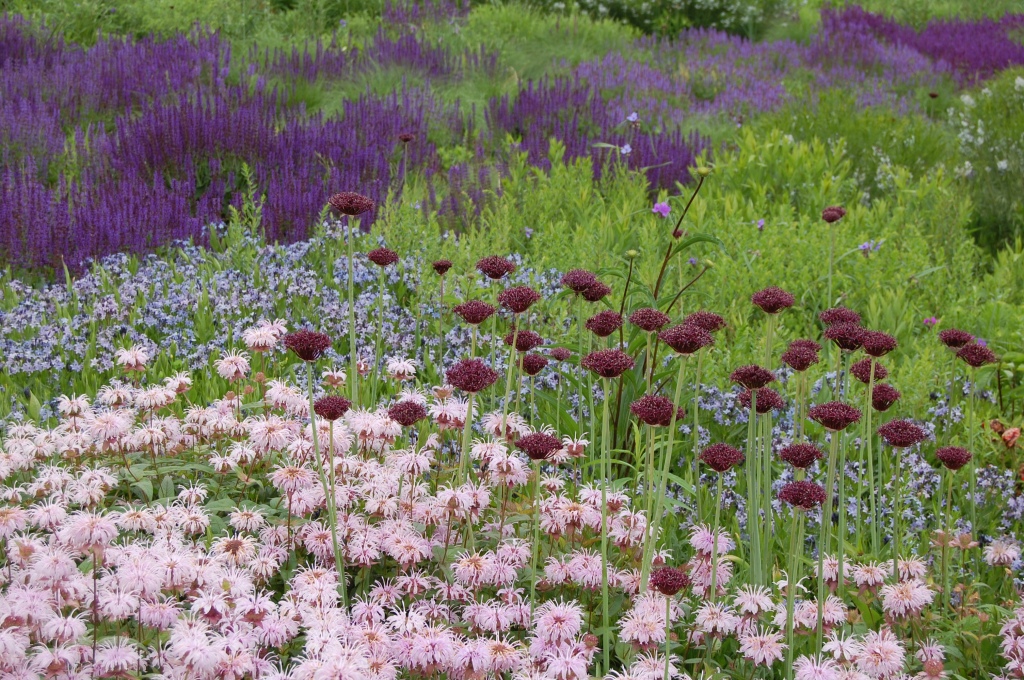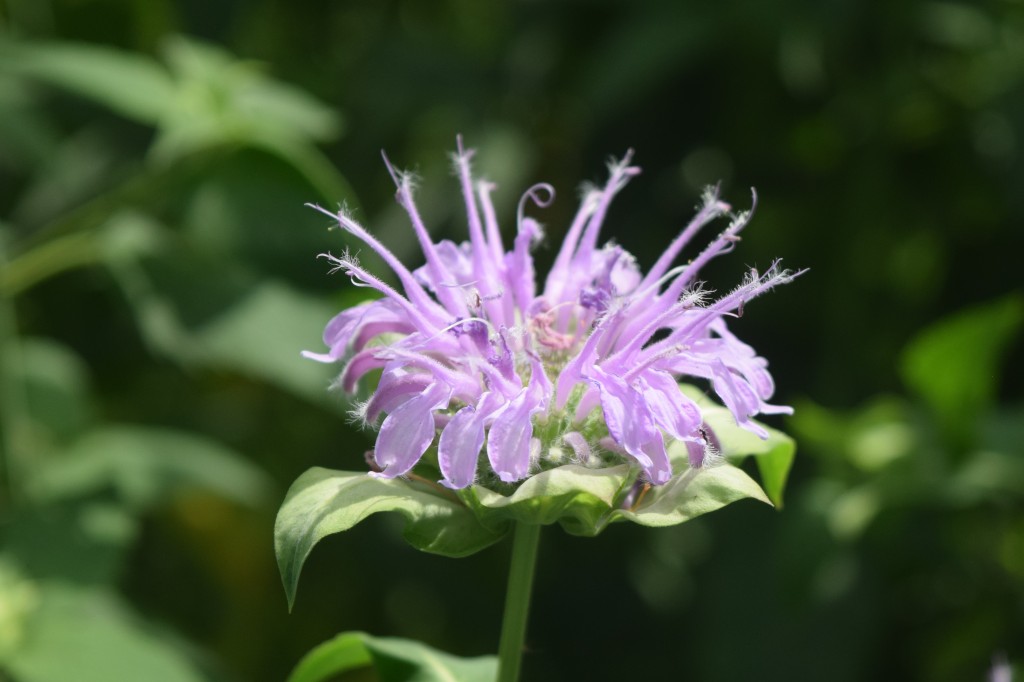July is the month of Monardas here. We have one straight species (Wild Bergamot, Monarda fistulosa) and three hybrid cultivars: ‘Raspberry Wine’, ‘Purple Rooster’, and what I suspect is a home-grown hybrid that looks like a cross between Wild Bergamot and ‘Purple Rooster’.
Gardeners interested in Monarda should check out two trials of various species and cultivars conducted by the Mt. Cuba Center (published earlier this year) and the Chicago Botanic Garden (published back in 1998).
One thing I found a bit dismaying was how poorly Wild Bergamot did in both studies. The Mt. Cuba Center gave it an overall rating of fair to poor, while the CBG deemed it “very poor” in terms of mildew resistance. This made me feel like a fan who watches a favorite athlete fumble a play during a big game, as I have a large clump of Wild Bergamot that I’m very fond of.
Moreover, in our garden this plant has usually had only modest troubles with downy mildew. The lavender flowers of Wild Bergamot are smallish but prolific. It spreads by rhizome but not nearly as aggressively as ‘Raspberry Wine’ and some other Monardas. My main complaint against Wild Bergamot is that it tends to grow too tall, 4-5′, and requires some support.
In terms of other straight species, M. diyma – usually known as Bee Balm, fared even worse in the trials than the Wild Bergamot. On the other hand, Eastern Bee Balm (M. bradburiana) was rated as “Excellent” by CBG, though it wasn’t included in the Mt. Cuba trial.

. If I had known about Eastern Bee Balm when I started my garden I would have planted some, as it is obligingly compact – just about 2′ tall.
‘Raspberry Wine’ was highly rated in both trials. I concur with that assessment. Lots of big red-purple flowers and foliage that is almost always disease-free. Tends to grow taller than is ideal, but responds well to cutting back, and spreads very aggressively by rhizome.
‘Purple Rooster’ was rated “excellent” in the Mt. Cuba trials. It stands out for its purple flowers, compact stature (about 3′) and mildew resistance. It wasn’t included in the CBG trials.
Cultivars rated highly by both CBG and Mt. Cuba were ‘Colrain Red’, ‘Gardenview Scarlet’, and ‘Violet Queen’. Some plants, like the M. fistulosa cultivar ‘Claire Grace’, had conflicting evaluations – in this case, rated highly by Mt. Cuba and poorly by CBG. This may be due to differing conditions between Mt. Cuba’s Mid-Atlantic climate and the midwestern climate of CBG. Unfortunately, the lists of plants tested in the two trials overlapped but were not identical.
The Mt. Cuba trial attempted to test each plant’s attractiveness to hummingbirds and to butterflies and moths. For hummingbirds, the biggest attractor by far was M. didyma ‘Jacob Cline’. ‘Raspberry Wine’ was one of the top five. The top butterfly and moth attractor was M. fistulosa ‘Claire Grace’.
It’s interesting that nine out of ten plants most attractive to hummingbirds and to butterflies/moths in this trial were cultivars. Only straight species Bee Balm (M. didyma) made it into the top ten (it ranked fourth in hummingbird visits). The authors note that there are “horticulturally desirable characteristics of cultivars (ie improved flower production and longer bloom times) that can have a positive impact on ecological function.” Of course, many (most?) cultivars are less beneficial for pollinators than the straight species, especially those with double blooms.
The trial did not include bees and wasps, but the Mt. Cuba folks have another study coming that looks at how different flower characteristics affect pollinator visitation. My own experience is that both Wild Bergamot and ‘Raspberry Wine’ are constantly being visited by numerous bees, especially bumblebees.
Anyhow, if you are thinking about planting Monardas in your garden, I would recommend that you check out the CBG and Mt. Cuba reports.










